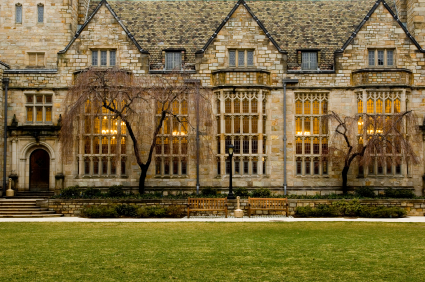Connecticut Student Grants for College
Getting Delaware Grants is Easier Than You Think
The state of Connecticut has set up an Office of Higher Education (abbreviated as CTOHE) to manage its financial aid programs for college students. CTOHE is the best source for current information on assistance offered by the state, which as of 2013 has five of its own grants listed on its website and permits downloading of additional details (found in the Connecticut Student Financial Aid Handbook).
The handbook, intended for professionals rather than the general public, discusses these grants in greater depth, providing helpful notes on funding status and legislative citations that will help you track annual allocations for each program.
About the FAFSA
Filing a Free Application for Student Aid, or FAFSA, is necessary to apply for all the grants listed below. The FAFSA is a federal form that includes a thorough financial profile of yourself and your family, who will usually be expected to make some contribution to your education.
You can complete the form online.
State Grants Found On CTOHE’s Website: For Any Major
Capitol Scholarship Grant Program
Referred to on the website as simply “Capitol Scholarship,” this grant goes to high achievers, specifically to students who meet one of these criteria:
- Graduated from high school in the top 20% of the class, or
- Scored either an 1800 on the SAT or 27 on the ACT.
You can apply for this grant with assistance from your high school’s guidance counselor, and it will give you as much as $2,000 a year to be used at a college in one of the following states: Connecticut, the District of Columbia, Maine, Massachusetts, Pennsylvania, Rhode Island, or Vermont. Those states have reciprocity agreements with Connecticut, in which each state treats students from another state as though they were its own residents for purposes of tuition, state financial aid, or both.
Financial need will also factor into the award decision.
Connecticut Aid to Public College Students Grant Program
The Connecticut Aid to Public College Students Grant Program, abbreviated as CAPCS, gives grants only to state residents who are enrolled in a Connecticut public institution of higher education (either a two- or four-year school is acceptable). The amount of the grant is determined by calculating remaining college expenses after all other sources of payment, including financial aid, have been applied. The calculation is made using a standard federal formula.
You must be enrolled either full- or part-time in a program leading to a degree. According to the handbook, criteria for increased funding include community service or membership in one of the following minorities: African American, Asian American, Hispanic/Latino, or Black and Native American. To apply for CAPCS, contact your school’s financial aid office after filing a FAFSA.
CAPCS is campus-based aid, meaning the grant money goes directly to, and is apportioned by, individual schools.
Connecticut Independent College Student Grant Program
The Connecticut Independent College Student Grant Program, or CICSG, is very similar to CAPCS but applies to students at private, rather than public, schools (referred to in the documentation as independent schools). The financial need calculation is performed in the same way, but the unmet financial need consists of the gap between full-time tuition in the Connecticut State University System and the student’s resources. That ensures that the state is not providing extra money for students at nonpublic schools.
The maximum annual amount of CICSG grants can change yearly, is always available through your school’s financial aid office, and is currently $7,875. CICSG funding goes to students who have financial need.
Minority Teacher Incentive Grant Program and Weisman Scholarship Program
Connecticut has two financial aid programs aimed at minorities who want to teach in Connecticut’s public schools, called the Minority Teacher Incentive Grant Program and the Weisman Scholarship Program. Both forms of aid are available to students from the following groups: African American, Hispanic/Latino, Asian American, and Native American. Candidates must be referred by the head of the school’s teaching department, and must agree to start teaching in a public school within a 16-month period after graduating.
There is one significant difference between the two. The Weisman awards are more specific about the teaching requirement: the chosen subject must be mathematics or science, and the chosen school must be a middle or high school. To apply, send in a nomination form completed by the appropriate school official.
Maximum annual award amounts are as follows:
- $5,000 for each of the last two years of school, and
- $2,500 per year for up to four years of teaching.
Other Grants for Connecticut Students
All the federal grants are available to Connecticut students also, and the CTOHE site provides information on the following federal grant programs: Pell, Federal Supplemental Educational Opportunity Grant (FSEOG), Iraq and Afghanistan Service Grant, and Teacher Education Assistance for College and Higher Education (TEACH) Grant.
Note: As long as sequestration remains in effect, the Iraq and Afghanistan and the TEACH programs will both be affected (see this page).
You can find additional details on all four programs here.
NEW: Scholarship search engine: fast, free, no registration required. Try it today!
